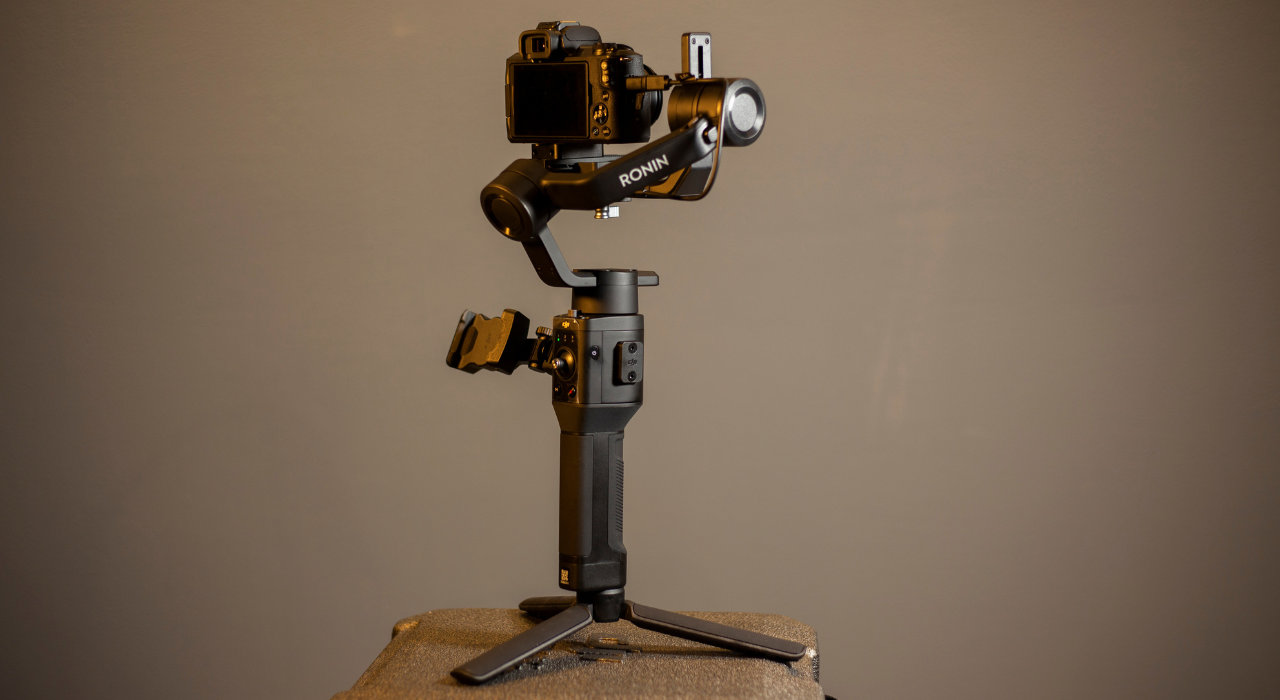Smooth and stable shots are the most essential requirement in the world of photography and videography.
Many such devices and pieces of equipment can help in providing stability while shooting.
A gimbal is one such device that can stabilize your camera or smartphone to get shake-free shots or footage, even in dynamic environments.
Using a gimbal, understanding how they work and which types suit you best, can improve your skills as a photographer, filmmaker, etc., and enhance your shooting experience.
Now, let’s move further in the article and talk more about Gimbals.
What is a Gimbal?
A gimbal is basically a device that is designed to counteract the unwanted motion in the environment and ensure fluid and shake-free footage.
It uses motors and advanced sensors that stabilise as well as support your device.
When the gimbal is mounted on the camera, smartphone, or drone, it uses motorized stabilization and intelligent algorithms to keep the camera steady even in dynamic conditions.
It has a pivoting tripod, which ensures the smooth movement of the object along the axis.
There are various types of gimbals available in the market, among which the most common are the 2-axis and 3-axis gimbals.
The 2-axis gimbals, as the name suggests, stabilize movement in the two directions, i.e.tilt (left/right) and roll (forward/backward).
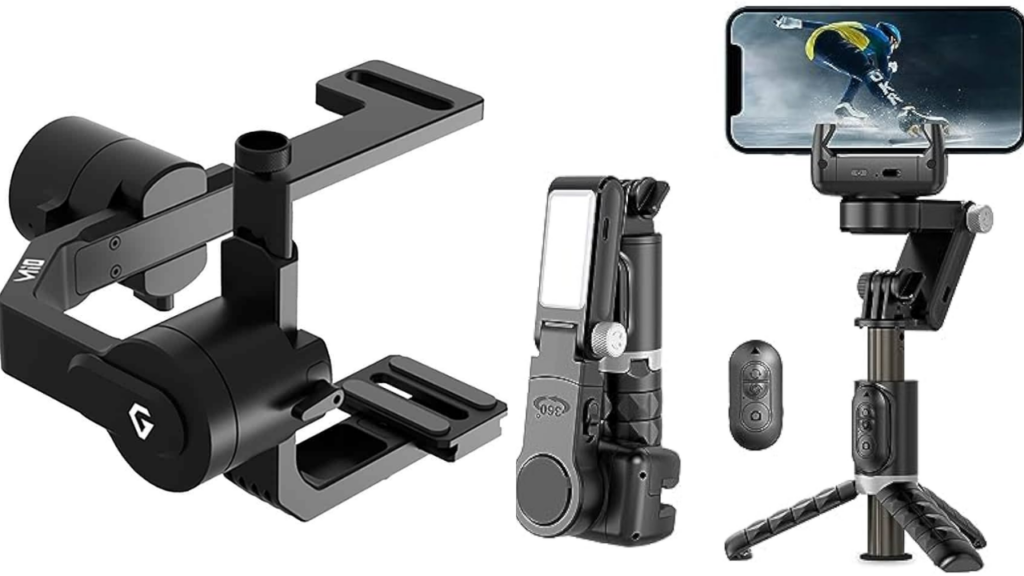
It is affordable and lightweight, but it only works for basic stabilisation needs, such as reducing the shakiness of drones and handheld cameras.
The 3-axis gimbal stabilizes movement in three directions, i.e. tilt (left/right), roll (forward/backward), and pan (up/down) as well.
This type of gimbals is often used in high-end video production. The selection of the right gimbal depends on factors such as the camera type, your shooting style, and the budget.
For professionals, 3-axis gimbals may be ideal in order to achieve higher smoothness, whereas 2-axis gimbals are best suited for casual users.
There are types of gimbals based on usage as well, such as handheld gimbals, wearable gimbals, drone gimbals, mechanical gimbals, etc.
Handheld gimbals are generally designed for smartphones and action cameras. These are popular among bloggers, travel influencers, and content creators.
The wearable or compact gimbals are mounted on helmets, chest rigs, or bikes. These are commonly used for action sports or extreme activities.
Drone gimbals are mounted on drones to stabilize aerial footage, ensuring smooth shots even during strong winds.
Most gimbals have remote controls, apps, or even joysticks to allow the user to adjust the camera angles, switch modes, and control the movements.
How to use Gimbal and Master it Like PRO?
Before you start working with a gimbal, you need to know some of the essential preparation steps to ensure optimal performance and the best results.
Some of the most important steps are mentioned below…
Charge the gimbal as well as the batteries
Before using the gimbal, you need to make sure that it is fully charged.
If the gimbal has a low battery, it can significantly affect the stabilization and performance.
Sometimes low battery can even result in reduced motor efficiency or even sudden shutdowns while recording.
As it has replaceable batteries, it is always suggested to carry extra batteries with you for emergencies.
It is also essential to check the charge and the condition of the replaceable batteries as well for safety.
Some gimbals also allow power banks, which can extend the usage to a point.
In simple words, just keep an extra power source or batteries handy with you while working.
Balance the camera properly
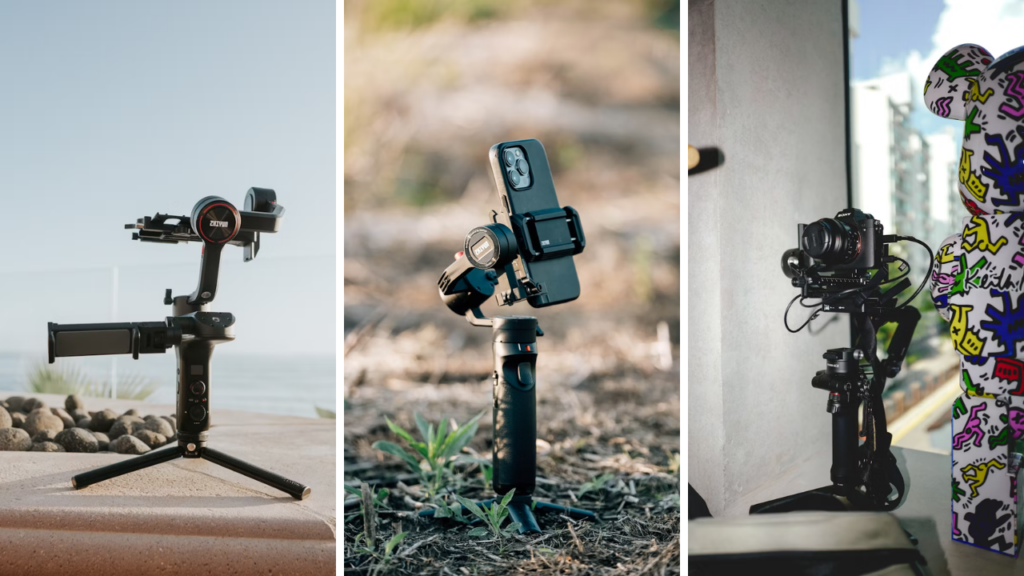
Proper balance is an important factor in having the best possible shots.
As important as proper balance is for photography, similarly, it is also important for the smooth and best functioning of a gimbal.
First, you need to mount the camera or smartphone on the plate before turning it on.
Make sure that the camera is steady and the centre of gravity is well distributed.
In case there is an imbalance, it can put an unnecessary strain on the motors, which can lead to overheating and a faster battery drain.
Calibarition
Calibration is an important step in order to ensure accurate stabilization and the motor efficiency of the gimbal.
Most models of the gimbals only require the initial calibration when they are used for the very first time or when mounting a brand new camera.
The calibration can help the gimbal register its resting position and further adjust accordingly.
There is an option for calibration in the mobile app of the gimbal or in onboard settings.
There are many models that have the option for auto-calibration, which can adjust the motor strength based on the camera’s weight and the balance.
Calibration is an important step that you need to follow to take care of your gimbal and maintain it.
Keep the firmware updated
The companies that manufacture the gimbals keep on releasing firmware updates.
These updates improve the stabilization algorithms, keep on adding new features, and fix the bugs.
An up-to-date firmware on your gimbal can ensure a smooth operation and better compatibility with the camera.
You can check the mobile app or the official manufacturer website for the latest updates.
Choose the right mode
Gimbals mostly come with various stabilization modes, which are best suited for different shooting styles.
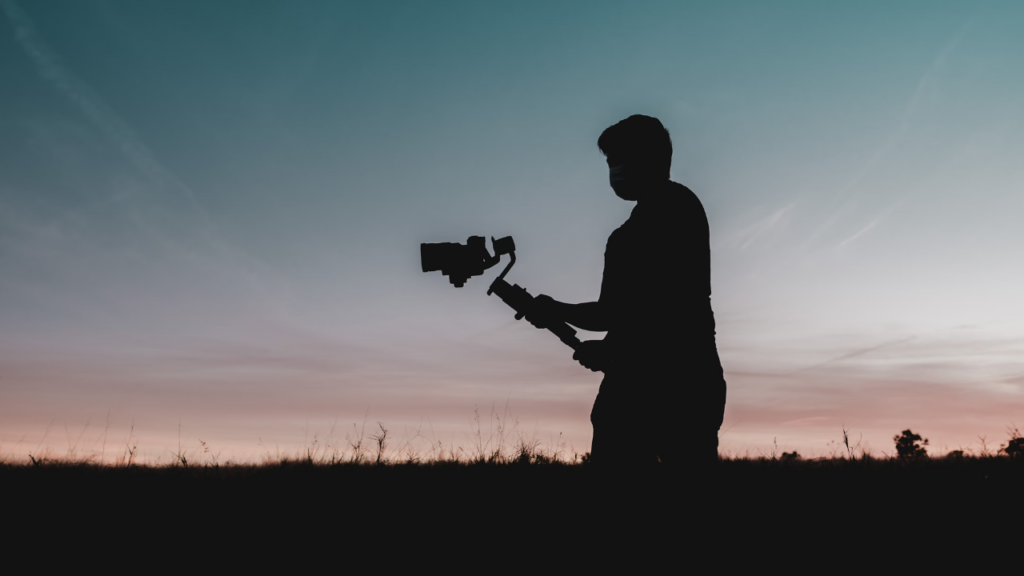
Some of the most common modes include the following.
Pan follow mode
In this mode, the gimbal follows the left-right movements while keeping the tilt locked, which is best suited for tracking shots.
Lock mode
In this mode, the camera stays locked in a fixed position and ignores hand movements, making it ideal for static or time-lapse shots.
Point of view mode
This mode enables the camera to move freely in all directions, mimicking a first-person perspective.
Then there is the Follow mode, which allows both tilting and panning and hence is best for dynamic shots.
These are some of the most common modes that are present in all the models of a gimbal.
Don’t overload
Every gimbal has a maximum capacity that it can handle and support, which can include the camera, the sensors or any other accessories.
Overloading can strain the motor, and as discussed above, straining the motor can lead to a reduction in the stabilization quality.
Sometimes, it can even lead to a mechanical failure.
Before attaching the camera to the gimbal, always check the weight limit for safety.
Pay attention to the environment
The environment can certainly affect the performance of the gimbal quite a lot, so you should consider the before filming.
As Gimbals are sensitive to moisture, you should avoid using them in rainy or snowy conditions.
Winds can sometimes make stabilization a bit harder, and hence, you should be cautious in windy conditions.
The extreme cold can reduce the battery performance of the gimbal, and the extreme heat can cause overheating.
The environmental conditions can affect the performance and the longevity of the gimbal.
Now that we have discussed the steps to take care of the gimbal, let’s discuss the ways to use a gimbal.
Ways to use Gimbal like a PRO
Using a gimbal with the right techniques can elevate your work and make it smooth and professional.
So here are some of the techniques that can help you with improving the quality of your videos.
Master the walk
A Gimbal can stabilize the camera, but it does not eliminate all the movement altogether.
A common mistake while using a gimbal can be walking too normally or too aggressively.
This adds way too much vertical movement, making the video blurry.
In order to avoid these movements, you can bend your knees slightly and take soft and controlled steps.
There is a technique called the ninja walk, which can be used to avoid the excess vertical movement.
You should walk heel-to-toe instead of stomping and also walk slowly to avoid sudden and jerky movements.
You could glide smoothly like a ninja without bobbing up and down.
Keep the gimbal closer to your core, this can reduce the arm fatigue for you and improve the control.
You can avoid the bouncing and the instability in your shots using the ninja walk.
You can practice first walking smoothly without the gimbal and perfect the movement, and later on, add the setup.
This technique allows for the best stabilization of the shots.
The Grip
Gimbals can surely be used with one hand, but the use of two hands can give you better control of the camera.
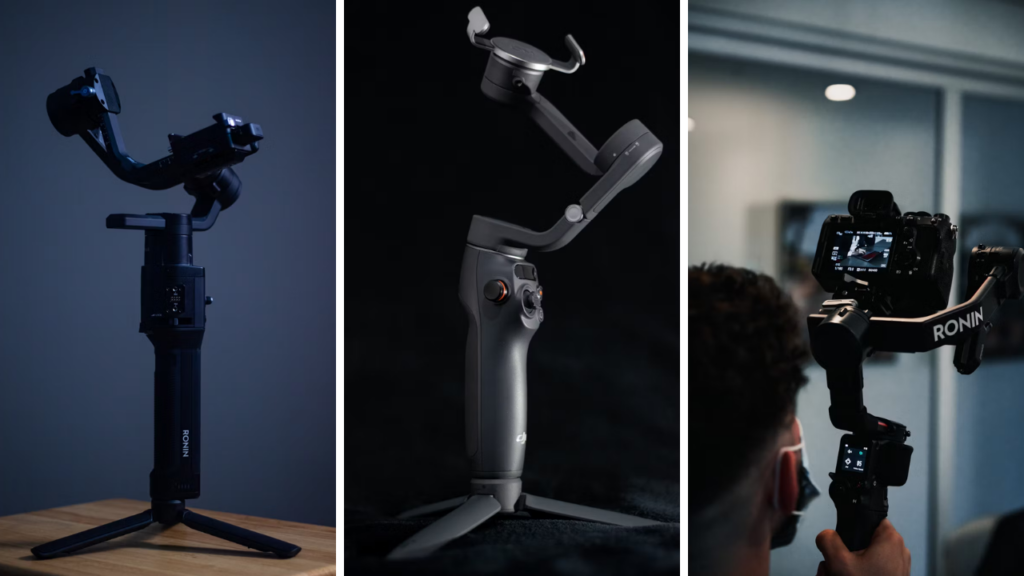
The use of two hands is essential while taking long takes or using heavy camera setups.
There are various models of gimbals that come with extra handles, which makes for a better grip.
You can even use the extra tripod attachment as a second grip for additional stability while in motion.
Add subtle tilts
Most people who use gimbals use them for the straight horizontal or vertical movements, but you can add an extra tilt to your shots to give them more of a cinematic feel.
You can introduce an upward or a downward tilt in the camera level while moving forward or backward.
This tilt can work great for dramatic effects and making characters appear larger than they are.
It can add a sense of storytelling and emotion to your shots.
Some of the most frequently asked questions related to the gimbals and their use are answered below.
FAQ(s) About Gimbals
What types of cameras can be used with a gimbal?
Gimbals can be used for various devices, which include smartphones, GoPros or other action cameras ( there are specific models for them), and mirrorless and DSLR cameras.
How do I properly balance a gimbal?
Balancing is an important part of a gimbal.
You can follow these steps to do so: Attach the camera before turning on the gimbal, then adjust the tilt axis, further adjust the tool axis so the camera doesn’t lean sideways, fine fine-tune the pan axis for a stable portion. Lock the adjustments and then turn on the gimbal.
Can a gimbal be used while running?
Yes, of course, you a use a gimbal while running. You can even use the techniques mentioned in the article above, like the ninja walk technique.
Can accessories like a microphone or a light be mounted on the gimbal?
Yes, there are various mounting points for accessories like the microphone, LED lights, or external monitors> Just make sure that you don’t exceed the weight limit of the gimbal.
What is wrong with the gimbal if it is vibrating or making noises?
These sounds or vibrations can mean a number of things.
Some of the common issues are that the camera is not balanced, the motor steers are not right, they are either too weak or too strong for the camera’s weight, and there can be other issues you can ask the customer care of the manufacturer about.
Final Words
Gimbals have proved to be a revolution in the world of videography.
These have been used to capture smooth, professional-quality vlogs, films, live scenes, and even action sequences.
You can maximize the gimbal’s capabilities by using the perfect combination of balancing techniques, the shooting modes in the gimbal, and the movement technologies.
The advanced features in the gimbal, like the object tracking, inception mode, time lapse, and hyper lapse, make it a kind of creative instrument that can help you bring your vision to life.
Technology keeps on advancing, which has also made gimbals more advanced, lightweight, and feature-packed over time.
There is more to mastering the gimbal than its stabilization, it’s far more about the creativity and the movement.
You can use various different transitions, techniques, and angles that can elevate your work.
It doesn’t matter if you are a beginner or an experienced photographer; you can take your work to the next level using the power of a gimbal.
